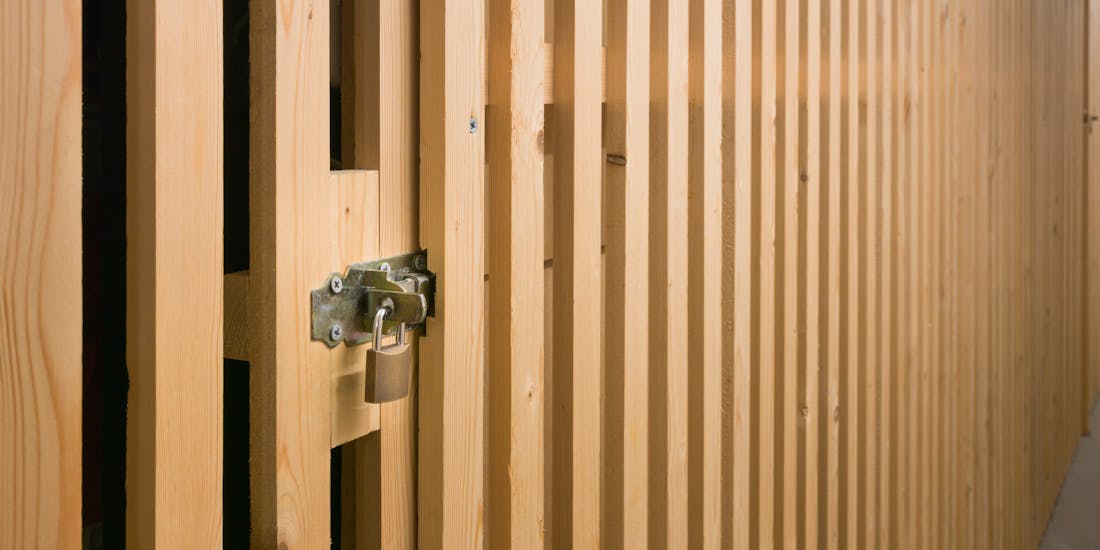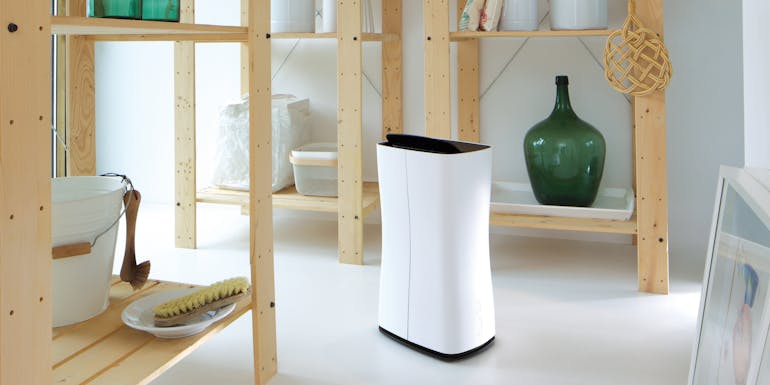
Lea Bieri, 26 August 2022
Basement/hobby room
What can you do to prevent humidity in your basement?
A damp basement is hardly a pleasant place to be. There is a high risk of mould forming if the level of humidity down there is permanently too high. This, along with the humidity itself, can attack, cause damage to and even destroy goods in storage, supplies, furniture and walls. Read on to find out how a basement becomes damp, what you should bear in mind and why a dehumidifier can help.
How humidity is created in a basement
When a basement becomes damp, there are many possible causes. The main problem lies in the fact that basements are located below ground level. The ground constantly releases moisture onto the walls which it cools down naturally and ensures that the temperature is constantly low. A lack of or poor wall insulation as well as a dilapidated structure can allow moisture ingress from outside. Water damage and incorrect ventilation can also lead to increased humidity. However, the most common reason is the formation of condensation. This occurs when warm moist air accumulates and comes into contact with the cold basement walls. Condensation forms and collects, creating ideal conditions for mould to form in and a musty smell – that typical «basement smell».
What happens if a basement is too damp
The effects of a basement that is permanently too damp range from unpleasant to devastating. A musty smell develops and mould can form and settle on all goods being stored and racks. What can simply be wiped off glass bottles can damage or even destroy foodstuffs, documents, photographs, textiles, appliances and furniture. The dampness affects the walls in particular and once mould has settled in the walls of a basement, the worst-case scenario is complete renovation. If the basement is lived in or used as a hobby room, an excessively high level of humidity can also be harmful to health.
What you can do if the level of humidity in your basement is too high
The two most important points are that you know what you want to use the basement for and that you monitor the temperature and humidity. To do that, you must measure the humidity in your basement – something that you can do quite easily with a so-called hygrometer. If the hygrometer reads more than 60% humidity for a long period of time and you are not purely using the room as a wine cellar, then you need to take action. If no mould has formed yet, a dehumidifier can help you to create the optimal indoor climate. Dehumidifiers remove the excessive moisture from the indoor air, ensuring optimal humidity in the basement. It is best to make sure that it has a drainage hose. This enables the device to operate continuously without you having to empty the water tank by hand on a regular basis. More information on this can be found by going directly to our devices.
However if you are not sure whether your walls are already damp or have been affected by mould, then it is best to seek the expertise of a professional.
What is the optimal level of humidity for basements?
Many people talk about a «rule of thumb» which specifies 50% to 65% relative humidity at 10 to 15 ° C as being the recommended level of humidity for a basement. Be careful with this recommendation as the optimal level of humidity for a basement is primarily dependent on the temperature (the colder it is, the lower it should be) and also on what type of basement it is and what it will be used for. For that reason, we advise you to start by deciding exactly what you want to use the basement for and then to find out the recommendations for that specific type of use. You can find helpful tips on the Internet – or you can take advantage of our free advice, we will be happy to help. However, it generally applies that if the level of humidity remains above 60% for a long period of time, there is a very likely risk of damage being caused to property and the building fabric.
Basement as a hobby room – what to bear in mind regarding the indoor climate
It’s what many people dream about: their own workshop, their own craft room, their own personal modelling corner, their own sewing studio, a rehearsal room for their band or a man cave. As soon as a basement starts being used by people, the ideal level of humidity becomes 40% up to a maximum of 60%. If you are going to be working with delicate materials in your hobby room, that should also be taken into account so that everything remains intact.
If you are able to and you don’t need the space, you can convert your basement into your dream hobby room. The most important thing – besides getting permission – is for the basement to be completely dry prior to conversion and to be properly insulated during the conversion process. To make sure that it stays properly dry too, it is worth purchasing a dehumidifier. Other mobile devices such as a fan heater for the winter, a fan for the summer or an air purifier if there are no windows can help to make sure that you stay healthy in your dream hobby room.
Whether it is used as a basement or hobby room: it is important to have the ideal level of humidity in the basement and it is worth bearing this in mind in the long term.
If you have questions related to indoor room climate, please get in touch with us. Or subscribe to our newsletter to regularly get informed about current topics regarding indoor climate, experience reports or Stadler Form insights.



